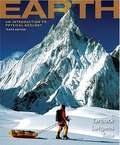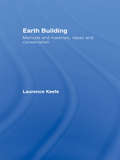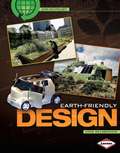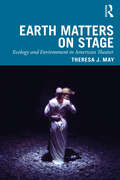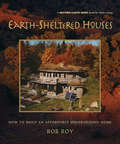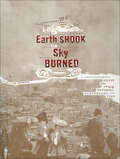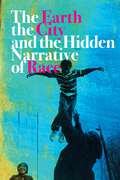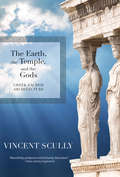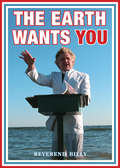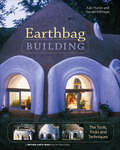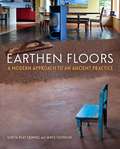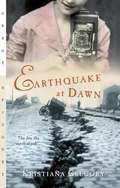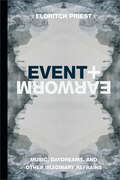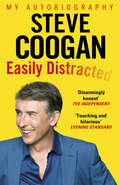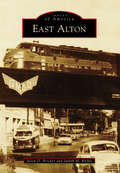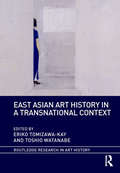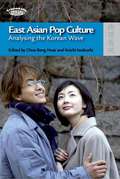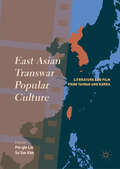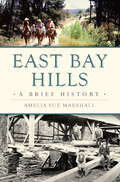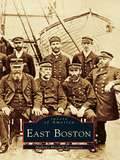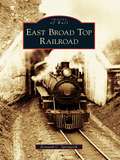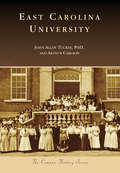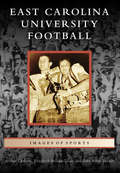- Table View
- List View
Earth: An Introduction To Physical Geology 10th Edition
by Edward J. Tarbuck Frederick K. Lutgens Dennis TasaWith its strong focus on readability and illustrations, this trusted best seller makes an often-complex subject more accessible for readers like you. It offers a meaningful, non-technical survey that is informative and up-to-date for learning basic principles and concepts. For the Tenth Edition, the text's design and figures have been updated, and the chapter on climate change has been revised significantly.
Earth and Space: Photographs from the Archives of NASA
by Bill Nye Nasa Nirmala NatarajTake a tour of the universe with this breathtaking collection of photographs from the archives of NASA. Astonishing images of Earth from above, the phenomena of our solar system, and the celestial bodies of deep space will captivate readers and photography lovers with an interest in science, astronomy, and the great beyond. Each extraordinary photograph from the legendary space agency is paired with explanatory text that contextualizes its place in the cosmic ballet of planets, stars, dust, and matter--from Earth's limb to solar flares, the Jellyfish Nebula to Pandora's Cluster. Featuring a preface by Bill Nye, this engaging ebook offers up-close views of our remarkable cosmos, and sparks wonder at the marvels of Earth and space.
Earth Building: Methods and Materials, Repair and Conservation
by Laurence KeefeBuildings with load-bearing earth walls were once widespread throughout Britain and many thousands still survive, including some dating from the fourteenth and fifteenth centuries. Earth is the ultimate form of ‘green’ building construction, creating no environmental pollutions and consuming virtually no energy. Subsoil can be dug from or near the site to construct buildings that will meet modern needs and conform to the latest building regulations. This book describes all aspects of earth building, explaining how earth performs as a building material and providing guidance on how best to repair and conserve existing earth buildings.
Earth-Friendly Design (Saving Our Living Earth)
by Anne WelsbacherDesigners create all products, from computers and cell phones to cars and buildings, to meet the needs and desires of buyers. But did you realize that each stage in the life of a manufactured product involves processes that can damage Earth's land, air, water, and the health of living things? Earth-friendly design can help us make our planet healthier. We must join together in this quest to make, move, use, reuse, and dispose of things in Earth-friendly ways. With engaging text and eye-catching images, plus a special Going Green section, this book tells you all about Earth-friendly design and what you can do to promote it.
Earth Matters on Stage: Ecology and Environment in American Theater (Routledge Studies in Theatre, Ecology, and Performance)
by Theresa J. MayEarth Matters on Stage: Ecology and Environment in American Theater tells the story of how American theater has shaped popular understandings of the environment throughout the twentieth century as it argues for theater’s potential power in the age of climate change. Using cultural and environmental history, seven chapters interrogate key moments in American theater and American environmentalism over the course of the twentieth century in the United States. It focuses, in particular, on how drama has represented environmental injustice and how inequality has become part of the American environmental landscape. As the first book-length ecocritical study of American theater, Earth Matters examines both familiar dramas and lesser-known grassroots plays in an effort to show that theater can be a powerful force for social change from frontier drama of the late nineteenth century to the eco-theater movement. This book argues that theater has always and already been part of the history of environmental ideas and action in the United States. Earth Matters also maps the rise of an ecocritical thought and eco-theater practice – what the author calls ecodramaturgy – showing how theater has informed environmental perceptions and policies. Through key plays and productions, it identifies strategies for artists who want their work to contribute to cultural transformation in the face of climate change.
Earth-Sheltered Houses
by Rob RoyAn earth-sheltered, earth-roofed home has the least impact upon the land of all housing styles, leaving almost zero footprint on the planet. Earth-Sheltered Houses is a practical guide for those who want to build their own underground home at moderate cost. It describes the benefits of sheltering a home with earth, including the added comfort and energy efficiency from the moderating influence of the earth on the home's temperature (keeping it warm in the winter and cool in the summer), along with the benefits of low maintenance and the protection against fire, sound, earthquake, and storm afforded by the earth. Extra benefits from adding an earth or other living roof option include greater longevity of the roof substrate, fine aesthetics, and environmental harmony.The book covers all of the various construction techniques involved, including details on planning, excavation, footings, floor, walls, framing, roofing, waterproofing, insulation, and drainage. Specific methods appropriate for the inexperienced owner/builder are a particular focus and include: Pouring one's own footings and/or floor The use of dry-stacked (surface-bonded) concrete block walls Post-and-beam framing Plank-and-beam roofing Drainage methods and self-adhesive waterproofing membranes The time-tested, easy-to-learn construction techniques described in Earth-Sheltered Houses will enable readers to embark upon their own building projects with confidence, backed up by a comprehensive resources section that lists all the latest products such as waterproofing membranes, types of rigid insulation, and drainage products that will protect the building against water damage and heat loss. Rob Roy is a former contractor with 27 years of experience and 12 previous books to his credit, including Cordwood Building and Timber Framing for the Rest of Us. An expert on underground building, he founded the Earthwood Building School in 1981 with his wife, Jaki, and is frequently a speaker at events throughout North America.
The Earth Shook, the Sky Burned: A Photographic Record of the 1906 San Francisco Earthquake and Fire
by William BronsonThe Earth Shook, The Sky Burned has mesmerized San Francisco tourists and residents for decades. Illustrated with more than four hundred on-the-scene photographs, this definitive book tells the dramatic story of the four days of upheaval and destruction that swept the city when a violent earth tremor rocked the land, succeeded rapidly by a devastating fire that destroyed nearly thirty thousand buildings and left over a quarter million people homeless. Now available as a digital book, The Earth Shook, The Sky Burned is a San Francisco classic, revealing what really happened that April morning over a century ago, when the face of the city was changed forever.
The Earth, the City, and the Hidden Narrative of Race
by Carl C. AnthonyIn this work, Carl Anthony shares his perspectives as an African-American child in post-World War II Philadelphia; a student and civil rights activist in 1960s Harlem; a traveling student of West African architecture; and an architect, planner, and environmental justice advocate in Berkeley. He contextualizes this within American urbanism and human origins, making profoundly personal both African American and American urban histories as well as planetary origins and environmental issues, to not only bring a new worldview to people of color, but to set forth a truly inclusive vision of our shared planetary future. The Earth, the City, and the Hidden Narrative of Race connects the logics behind slavery, community disinvestment, and environmental exploitation to address the most pressing issues of our time in a cohesive and foundational manner. Most books dealing with these topics and periods silo issues apart from one another, but this book contextualizes the connections between social movements and issues, providing tremendous insight into successful movement building. Anthony's rich narrative describes both being at the mercy of racism, urban disinvestment, and environmental injustice as well as fighting against these forces with a variety of strategies. Because this work is both a personal memoir and an exposition of ideas, it will appeal to those who appreciate thoughtful and unique writing on issues of race, including individuals exploring their own African American identity, as well as progressive audiences of organizations and community leaders and professionals interested in democratizing power and advancing equitable policies for low-income communities and historically disenfranchised communities.
The Earth, the Temple, and the Gods
by Vincent ScullyWhen The Earth, the Temple, and the Gods first appeared in 1962, it was hailed by the critics for it erudition, historical imagination and boldness. Subsequently, this comprehensive study of Greek temples and site-planning has been widely accepted as a landmark of architectural history, for it offers an inspired and arresting insight into nature and function of Greek sacred architecture. Vincent Scully, one of America's most brilliant and articulate scholars, understands the temples as physical embodiment of the gods in landscapes that had for the Greeks divine attributes and sacred connotations. He explores the meanings inherent in the calculated interaction between man-made sculptural forces and the natural landscape, and he relates this interaction to our understanding of Greek culture from the pre-Greek Aegean to the Hellenistic period.Years of research and travel were devoted to The Earth, the Temple, and the Gods. Scores of sites were restudied on the spot, including many lesser-known sanctuaries throughout the Hellenic world. The study includes reconstruction drawings, plans, and maps along with its richly illustrated, detailed discussions of major sites.
The Earth, the Temple, and the Gods
by Vincent ScullyWhen The Earth, the Temple, and the Gods first appeared in 1962, it was hailed by the critics for it erudition, historical imagination and boldness. Subsequently, this comprehensive study of Greek temples and site-planning has been widely accepted as a landmark of architectural history, for it offers an inspired and arresting insight into nature and function of Greek sacred architecture. Vincent Scully, one of America's most brilliant and articulate scholars, understands the temples as physical embodiment of the gods in landscapes that had for the Greeks divine attributes and sacred connotations. He explores the meanings inherent in the calculated interaction between man-made sculptural forces and the natural landscape, and he relates this interaction to our understanding of Greek culture from the pre-Greek Aegean to the Hellenistic period.Years of research and travel were devoted to The Earth, the Temple, and the Gods. Scores of sites were restudied on the spot, including many lesser-known sanctuaries throughout the Hellenic world. The study includes reconstruction drawings, plans, and maps along with its richly illustrated, detailed discussions of major sites.
The Earth Wants YOU
by Reverend Billy Talen"You must check out the newest from my favorite transcendent and down to earth preacher."--Laurie Anderson, artist, musicianThe Earth Wants YOU is a motivational handbook, filled with inspired visions of a wild, creative, Earth-led cultural revolution. Reverend Billy and the Church of Stop Shopping offer up a heady mix of humor, insightful critique, passionate commitment, emotional catharsis, and example after example of vibrant direct action. Stop shopping and feel the love as you sign up for the struggle of our lives! Earthalujah!Praise for The Earth Wants YOU:"Singing instructions for joining the Earthalujah choir!"--Jodie Evans, CODEPINK"My Earthmojis are smiling for Reverend Billy! And that's all the dirt you're gonna get from me. O;"--Justin Vivian Bond, trans-genre artist, Radical Faerie"Mama Earth will shake us ALL off unless we shake shit UP and shut it DOWN!"--Bertha Lewis, The Black Institute"This is what makes social movements succeed--it's the big love-slog we have to go through to achieve change."--Andy Bichlbaum, The Yes Men"Join Rev and his merry band of activists as they imagine ways of arousing concern for the environment and racial justice."--Coco Fusco, creator of Eu Sou Um Consumidor"When the singing activists hit the high notes in a bank lobby or a DARPA lab or the back aisle of a Walmart, they wipe away the veils hiding the madness of our corporate-controlled, consumer-crazed society."--Annie Leonard, director of Greenpeace USA"Ssssh, listen . . . let the Church of Stop Shopping exorcise your fear, doubt and burnout, and join the Earthalujah Revolution!"-Jess Worth, BP or not BP?"This call to action is at once sobering and encouraging. We have fucked up really badly, but the ability to see it-is the first and hardest step toward fixing it."--Douglas Rushkoff, author of Throwing Rocks at the Google Bus"Reverend Billy's ALL IN! bodies and voices . . . not just clicks and posts, for this small village we call Earth. Preach On!"--Obang Metho, Solidarity Movement for a New Ethiopia"The Stop Shoppers packs a whoop."--Roberto Sifuentes, La Pocha Nostra"In between satire and silence, there is a space of penetrating reckoning for all vibrations that flow counter to the balance of Nature. And from this dynamic and tricky space, the Honorable Reverend and his Holified Choir will shout, sing and sermonize a soul-bound love message of Truthalujah!"--John Sims, The AfroDixie Remixes"The Church of Stop Shopping is in the vanguard of a new movement that challenges this consumer society that is killing our planet."--Mike Roselle, Climate Ground Zero and Coal River Mountain Watch"Billy, Savi and the choir have love and optimistic humor, and they don't give up on people."--David LaChapelle, comedian"He seems to be writing while his actions are going on, like he can write while he's hand-cuffed."--Benny Zable, The Nimbin Environment Centre, NSW Australia"The Earth Wants You takes readers deep inside the heart, mind and balls of the activist-artist. Reverend Billy rocks hard!"--Annie Sprinkle, artist, ecosexual sexecologist"He was a comic act. Now he's evolved into a man compulsively challenging the true extent of the right to protest."--Anohni, creator of the song "4 Degrees"Reverend Billy and his choir of singing-activists are on the front lines of creative direct action, and here they offer up a distillation of the passion, the inspiration, and the hopes for love and survival that fuel their work. In a mix of essays, polemics, surrealist scenarios and news flashes from the frontlines, Reverend Billy answers the question, "What are we to do?" with a resounding chorus of "Take Action NOW!"
Earthbag Building: The Tools, Tricks and Techniques (Mother Earth News Books for Wiser Living)
by Donald Kiffmeyer Kaki HunterOver 70 percent of Americans cannot afford to own a code-enforced, contractor-built home. This has led to widespread interest in using natural materials--straw, cob, and earth--for building homes and other buildings that are inexpensive, and that rely largely on labor rather than expensive and often environmentally-damaging outsourced materials.Earthbag Building is the first comprehensive guide to all the tools, tricks, and techniques for building with bags filled with earth--or earthbags. Having been introduced to sandbag construction by the renowned Nader Khalili in 1993, the authors developed this "Flexible Form Rammed Earth Technique" over the last decade. A reliable method for constructing homes, outbuildings, garden walls and much more, this enduring, tree-free architecture can also be used to create arched and domed structures of great beauty--in any region, and at home, in developing countries, or in emergency relief work.This profusely illustrated guide first discusses the many merits of earthbag construction, and then leads the reader through the key elements of an earthbag building: Special design considerations Foundations, walls and floors Electrical, plumbing and shelving Lintels, windows and door installations Roofs, arches and domes Exterior and interior plasters.With dedicated sections on costs, making your own specialized tools, and building code considerations, as well as a complete resources guide, Earthbag Building is the long-awaited, definitive guide to this uniquely pleasing construction style.Kaki Hunter and Donald Kiffmeyer have been involved in the construction industry for the last 20 years, specializing in affordable, low-tech, low-impact building methods that are as natural as possible. They developed the "Flexible Form Rammed Earth Technique" of building affordably with earthbags and have taught the subject and contributed their expertise to several books and journals on natural building.
Earthen Floors
by Sukita Reay Crimmel James ThomsonFor most of human history, people have lived in durable, comfortable buildings made from natural materials such as soil, sand, rocks, and fiber. All over the globe, these ancient traditions persist; a quarter to a third of the world's population today lives in houses built partially or entirely of earth. Conventional Western building techniques using industrial materials may save time and create efficiencies, but these perceived savings come at considerable financial and environmental cost.As well as boasting a unique and beautiful aesthetic, natural building techniques are accessible, affordable, and non-toxic. Earthen Floors: A Modern Approach to an Ancient Practice is the first comprehensive, fully illustrated manual covering the history, use, and maintenance of this attractive, practical flooring option. This detailed, fully illustrated guide explains every part of the process, including: Sourcing and harvesting materials Preparing the subfloor Pouring, finishing, and sealing the floor Living with and maintaining your earthen floorBecause information on creating quality earthen floors was not previously widely available, there have been some negative experiences. Drawing on the combined knowledge of the most qualified earthen floor practitioners, as well their own substantial experience, the authors deliver the definitive resource for this exciting technique, perfect for everyone from the novice to veteran builder.Sukita Reay Crimmel has installed over twenty thousand square feet of earthen flooring, and is one of the preeminent experts in the emerging field of earthen floors.James Thomson is part of House Alive, one of the leading natural building training organizations in the country.
Earthquake at Dawn
by Kristiana GregoryA novelization of twenty-two-year-old photographer Edith Irvine's experiences in the aftermath of the 1906 San Francisco Earthquake, as seen through the eyes of fifteen-year-old Daisy, a fictitious traveling companion.
Earworm and Event: Music, Daydreams, and Other Imaginary Refrains (Thought in the Act)
by Eldritch PriestIn Earworm and Event Eldritch Priest questions the nature of the imagination in contemporary culture through the phenomenon of the earworm: those reveries that hijack our attention, the shivers that run down our spines, and the songs that stick in our heads. Through a series of meditations on music, animal mentality, abstraction, and metaphor, Priest uses the earworm and the states of daydreaming, mind-wandering, and delusion it can produce to outline how music is something that is felt as thought rather than listened to. Priest presents Earworm and Event as a tête-bêche—two books bound together with each end meeting in the middle. Where Earworm theorizes the entanglement of thought and feeling, Event performs it. Throughout, Priest conceptualizes the earworm as an event that offers insight into not only the way human brains process musical experiences, but how abstractions and the imagination play key roles in the composition and expression of our contemporary social environments and more-than-human milieus. Unconventional and ambitious, Earworm and Event offers new ways to interrogate the convergence of thought, sound, and affect.
Easily Distracted
by Steve CooganSteve Coogan was born and raised in Manchester in the 1960s, the fourth of six children. From an early age he entertained his family with impressions and was often told he should 'be on the telly'. Failing to get into any of the London-based drama schools, he accepted a place at Manchester Polytechnic School of Theatre and before graduating had been given his first break as a voice artist on the satirical puppet show Spitting Image. The late eighties and early nineties saw Coogan developing characters he could perform on the comedy circuit, from Ernest Moss to Paul Calf, and in 1992 he won a Perrier award with John Thomson. It was around the same time, while working with Armando Iannucci and Patrick Marber on On The Hour and The Day Today, that Alan Partridge emerged, almost fully formed. Coogan, once a tabloid fixture, is now a respected film actor, writer and producer. He runs his own production company, Baby Cow, has a raft of films to his name (from 24 Hour Party People to Alpha Papa, the critically-acclaimed Partridge film), six Baftas and seven Comedy Awards. He has found huge success in recent years with both The Trip and Philomena, the latter bringing him two Oscar nominations, for producing and co-writing.In Easily Distracted he lifts the lid on the real Steve Coogan, writing with distinctive humour and an unexpected candour about a noisy childhood surrounded by foster kids, his attention-seeking teenage years and his emergence as a household name with the birth of Alan Partridge.
East Alton (Images of America)
by Jason D. Bricker Judith M. RichieEast Alton has a long and proud history. From the earliest settlement, Beeman’s (Benen) Fort, in 1811, the village of East Alton has long been an industrial powerhouse. The home of Olin Corporation’s Winchester Division, East Alton’s industrial production played an important part in winning both world wars. East Alton shared a synergistic growth with Olin Corporation. Having all the trappings of a company town, it somehow transcended this to become a thriving diverse community, filled with a dedicated citizenry, strong schools, generous communities of faith, and a guiding government. East Alton’s incorporation in 1893 was just four years before this country’s first economic depression, the Depression of 1897. Overcoming economic challenges and fostering growth has enabled the village not only to survive but also to succeed.
East Asian Art History in a Transnational Context (Routledge Research in Art History)
by Eriko Tomizawa-Kay Toshio WatanabeThis is the first comprehensive English-language study of East Asian art history in a transnational context, and challenges the existing geographic, temporal, and generic paradigms that currently frame the art history of East Asia. This pioneering study proposes an important new framework that focuses on the relationship between China, Japan, and Korea. By reconsidering existing concepts of ‘East Asia’, and examining the porousness of boundaries in East Asian art history, the study proposes a new model for understanding trans-local artistic production – in particular the mechanics of interactions – at the turn of the 20th century.
East Asian Pop Culture
by Chua Beng HuatThe International group of contributors of this volume provides, collectively, a multi-layered analysis of the emerging East Asian media culture, using the Korean TV drama as its analytic vehicle. By closely examining the political economy of TV industry, audiences of the regional media flows in terms of gender subjectivity constructions, perceptions of colonial-postcolonial relationships, and nationalist responses to trans-national media culture exchanges, this volume highlights the multiple connectivities and implications of popular cultural flows and exchanges in East Asia.
East Asian Transwar Popular Culture: Literature and Film from Taiwan and Korea
by Pei-Yin Lin Su Yun KimThis collection examines literature and film studies from the late colonial and early postcolonial periods in Taiwan and Korea, and highlights the similarities and differences of Taiwanese and Korean popular culture by focusing on the representation of gender, genre, state regulation, and spectatorship. Calling for the “de-colonializing” and “de–Cold Warring” of the two ex-colonies and anticommunist allies, the book places Taiwan and Korea side by side in a “trans-war” frame. Considering Taiwan–Korea relations along a new trans-war axis, the book focuses on the continuities between the late colonial period’s Asia-Pacific War and the consequent Korean War and the ongoing conflict between the two sides of the Taiwan Strait, facilitated by Cold War power struggles. The collection also invites a meaningful transcolonial reconsideration of East Asian cultural and literary flows, beyond the conventional colonizer/colonized dichotomy and ideological antagonism.
East Bay Hills: A Brief History (Brief History)
by Amelia Sue MarshallLike the mist rising from San Francisco Bay encircles the towering redwoods, the little-known legends of the East Bay Hills enrich a glorious history. Follow the trails of Saclan and Jalquin-Yrgin people over the hills and through the valleys. Ride with the mounted rangers through the Flood of ’62. Break into a sealed railroad tunnel with a pack of junior high school boys. Learn how university professors, civil servants and wealthy businessmen planned for years to create a chain of parks twenty miles along the hilltops. Author Amelia Sue Marshall explores the heritage of these storied parklands with the naturalists who continue to preserve them and the old-timers who remember wilder days.
East Boston
by Anthony Mitchell SammarcoOriginally called Noodle's Island, East Boston was once comprised of five islands connected by marshland. Today, many people identify East Boston as the location of Logan International Airport, but it is really much more than that. From colonial times through the late twentieth century, the neighborhood of East Boston has experienced significant developments in the fields of city planning, transportation, and urban development. Until the nineteenth century, East Boston was a rural community whose land was used for grazing and firewood. The East Boston Company was incorporated by William Hyslop Sumner in 1833 to plan the residential and commercial growth of this Boston neighborhood. Connecting East Boston to the city were various modes of transportation including ferries, railroads, and an underground streetcar tunnel. In the 1920s, construction of the Boston Airport, later Logan International Airport, was begun.
East Broad Top Railroad
by Kenneth C. SpringirthChartered in 1856, the East Broad Top Railroad began operating in 1873 through scenic Huntingdon County in south-central Pennsylvania. This well-managed narrow-gauge railroad connected the isolated Broad Top Mountain coal field with the Pennsylvania Railroad at Mount Union. With a decline in the hauling of coal, service ended in 1956. Nick Kovalchick, president of the Kovalchick Salvage Company of Indiana, Pennsylvania, purchased the railroad and reopened a portion of it as a tourist line in 1960. Through vintage photographs, East Broad Top Railroad showcases the steam locomotives, rolling stock, and railroad yard at Rockhill Furnace, which is the most historic railroad yard in North America.
East Carolina University
by John Allen Tucker Arthur CarlsonEast Carolina University was founded by the State of North Carolina in 1907 as a teacher training school meant to provide professionally trained faculty for schools in the eastern part of the state. Within two decades, the school matured into a teacher's college. Although coeducational from the start, the vast majority of the student body early on was female. Following World War II and the gender transformation of higher education resulting from successive GI Bills, East Carolina emerged with increasing balance as the male student body grew to match the female population on campus. In subsequent decades, East Carolina continued to expand academically, emerging as a research university with a medical school and a dental school. Today, ECU is a leading producer of K-12 teachers in the Southeast as well as a leader nationwide in training practitioners of family medicine. The impressive development of East Carolina has flowed from its embodiment of the school's ethic of service to the local community and, in the broadest context, the best interests of humanity.
East Carolina University Football (Images of Sports)
by John Allen Tucker Arthur Carlson Elizabeth Brooke TolarEast Carolina University played its first intercollegiate football game on October 29, 1932, against the Scots of Presbyterian Junior College. In the more than eight decades that have followed, the ECU Pirates have experienced triumph and tragedy while creating a premier game-day experience. From the team's early days playing on farmland through the decade-long quest to join the Southern Conference, ECU's rise is recounted through these pages. Players are featured alongside legendary and colorful coaches in this history of Pirate football.
